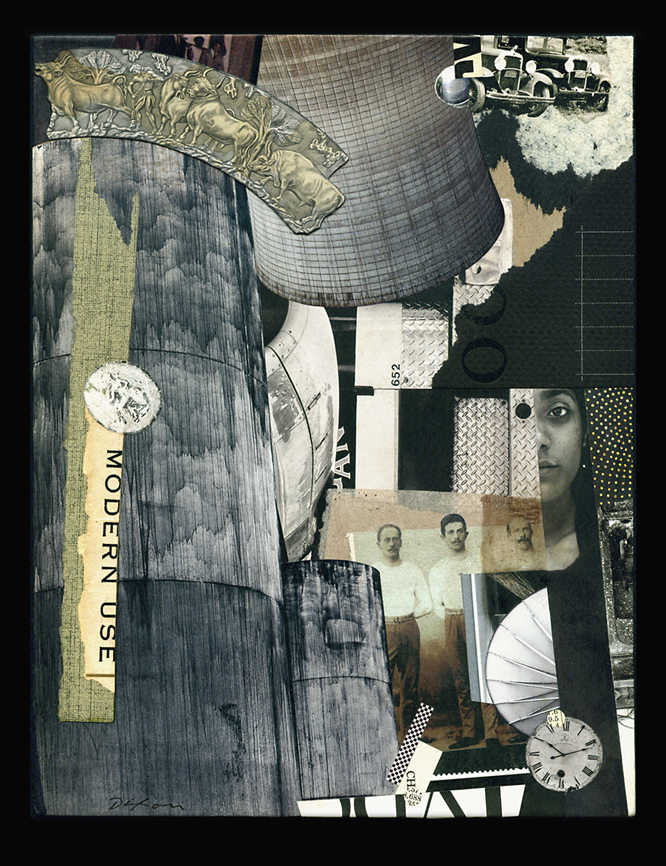“As long as movements require our attention they are kata (form), when the kata become spontaneous they become waza (technique). As long as we persist in viewing kata superficially, we will begin to think that they are of special importance.”
— Yushio Kuroiwa
When explaining aikido, the late martial artist Yushio Kuroiwa taught the practice of rational movement, so that one could spontaneously execute a natural movement as a result. For me, this idea has a distinct parallel to the art of collage, which is based on repetitive experimentation. With study and discernment, the collage artist can discriminate the difference between a superficial composition that was contrived with too much self attention, and an intuitive composition that developed more naturally — an expression of synchronicity — that grew from understanding the essence of creativity.
Kuroiwa encouraged his students to not blindly follow masterful forerunners, but to observe and discover their “causes, effects, and processes of things, and their similarities and differences through experience.” He pointed out that “someone with poor handwriting cannot write beautifully, even when using a good pen. A skilled calligrapher, however, can write beautifully even when using an inexpensive pen. It is not that the pen is good, but rather that the writer’s ability, as a result of long experience, is excellent.”
It is beneficial to keep in mind that even though we are “working artists,” much of our “work” is not significant in and of itself as an artistic product, especially if it is merely a conscious application of formulae largely exhausted decades ago during the formative years of our medium as a modern art. Instead, maintain your drill, your ritual of formation, not to yield marketable artifacts, but to internalize an “organic” process that leads to a rewarding sense — that we have freely expressed the natural ability to create something with real spontaneity.
Thanks for visiting. Now, let’s go make more art . . .

Modern Use
collage experiment in monochrome by J A Dixon
8.375 x 11 inches
Purchase this artwork.